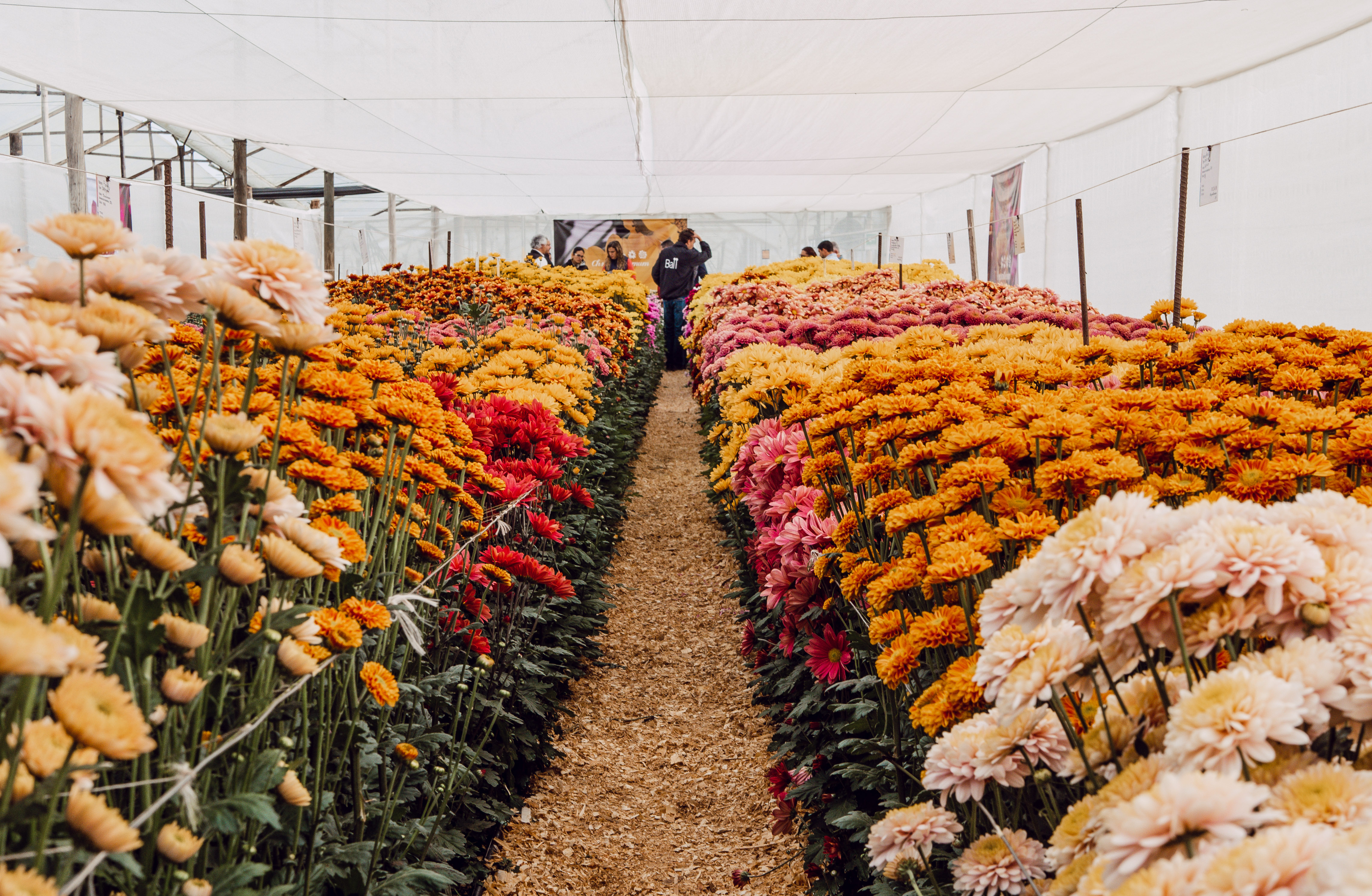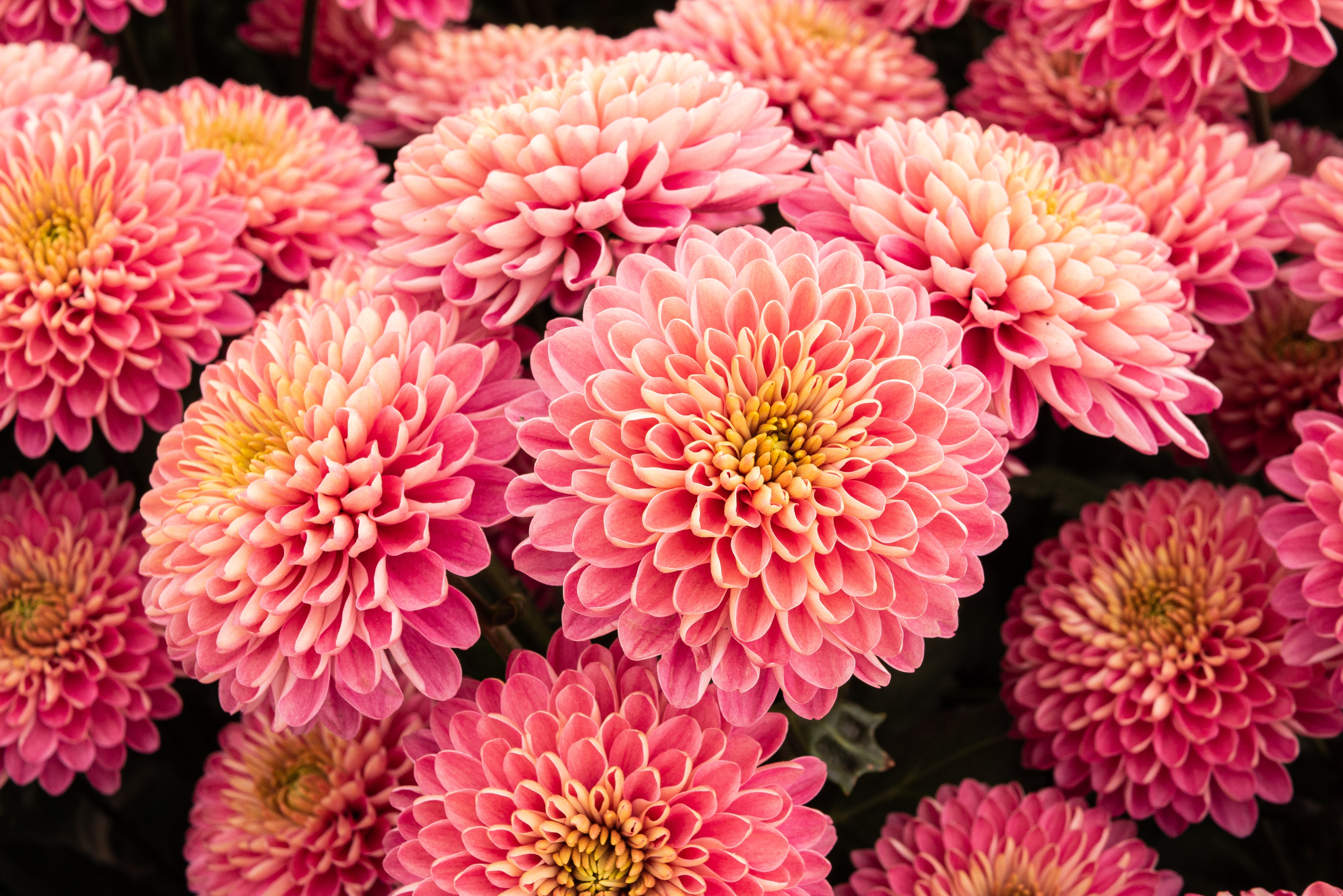Chrysanthemums: a unique path of exploration through breeding!
From the beginning of agriculture, man has sought to accelerate the process of improving crops and/or plants in order to find those desirable results determined by characteristics such as genetic improvement and aspects such as resistance, strength and durability. Many of the results of successful harvests and productions have been linked to variations in crops that have been obtained by multiple DNA mutations, these caused spontaneously by nature and the Sun. This is why when we discovered the power of mutations and how to induce them in our crops, we found incredible results in many fields.
Throughout history we have seen varieties of crops such as rice, corn and many others grow with a technique that endures to this day: hybridization. This applies the principles of genetics to produce flowering varieties, with special characteristics, such as greater resistance, better stems, more vibrant and intense colors, etc.
The chrysanthemum is one of the flowers with the greatest diversity of shapes and colors. It belongs to the Asteraceae family, one of the largest flower families. The cultivation of chrysanthemums in Asia as flowering plants dates back to before 1500 BC, in Japan it is the Imperial Seal, we can even see it printed on their passports. Chrysanthemums are flowers that offer a wide variety of shapes ranging from the simplest, daisy-like, to the so-called anemones, tubular, pompoms, etc… And like other plants, they reproduce sexually through pollination.
Today at BALL, we use various methods for the production of new and improved varieties of chrysanthemums. Basically, they can be reduced to mutational hybridization and taking advantage of those mutations that occur naturally and spontaneously.
What do we expect with mutational hybridization in chrysanthemums?
When we x-ray a chrysanthemum sample, we hope to cause a change in the DNA from one color, for example, lavender or pink, to another color such as white or yellow. We are looking for different results in chrysanthemums, different colors, shapes, vase life, healthy foliage and many more successful characteristics.
How do we do it?
We use mutational breeding with the help of x-rays, or gamma rays. Using radiation helps us to be more predictable & successful, to get the changes we want. As hybridizers we want to accelerate the process that nature could give us by itself, but would take many years to occur.
The process of improvement and hybridization consists of selecting those chrysanthemums that have outstanding characteristics to the greatest degree possible, to take advantage of these features, reproduce and achieve the desired improvement in our chrysanthemums. For our hybridizers, DNA is the fundamental factor to induce mutations.
All the processes of genetic improvement, from the planning, the crossings, the selection to produce and commercialize the different varieties, has positioned us as one of the main chrysanthemum hybridizers. Our team is always looking to the future, achieving with experience and maturity to continue introducing and positioning innovative chrysanthemum varieties, with great potential to be profitable in all markets.
We are constantly innovating to inspire and offer the chrysanthemum flower industry the best results.
We are constantly innovating to inspire and offer your business the best results. Contact us and discover this incredible variety for your crop!




